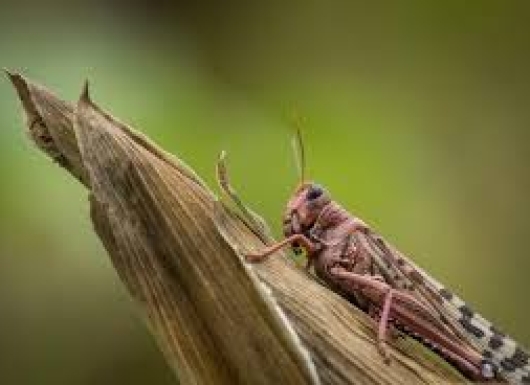Contributer: ICRISAT
Desert locusts are one of the most destructive transboundary pests in Africa, with swarms that can cover hundreds of square kilometers and consume vast amounts of crops and pasture in a matter of hours. Their unpredictable outbreaks threaten millions of smallholder farmers and pastoralists, undermining food security and national economies across the Sahel, East Africa, and the Horn of Africa. Traditional surveillance methods based mainly on scattered field observations are often too slow and fragmented to provide timely warnings, leading to delayed responses and costly emergency control campaigns.
The Predictive Locust Outbreak and Control System (P-LOCUST) was developed as a geospatial early warning solution to close this gap. It integrates satellite remote sensing data, ground-level field observations, and ecological modeling tools to forecast where breeding (from a frontier country such as Mauritania) and swarm formation are most likely to occur. By generating risk maps and interactive dashboard (https://code.earthengine.google.com/da1a34123db401d5ac41f8d7506a0f0b), it enables governments, extension services, and farming communities to anticipate outbreaks, prioritize surveillance, and take preventive action. This proactive approach reduces crop losses, lowers the cost of control operations, and safeguards livelihoods, making P-LOCUST a critical innovation for pest management and resilience in Africa.

Integrated Data Streams:
Risk Mapping & Dashboards:
Early Warning Advantage:
Economic & Environmental Efficiency:
Farmer & Community Benefits:
Regional Collaboration:
Enhances cooperation among governments, FAO, and regional centers for joint locust management strategies
Complete here: P-LOCUST has already been piloted in Sahelian countries such as Niger, Mali, and Burkina Faso, where it has supported governments in identifying high-risk areas and planning surveillance and control measures. The tool has also been used in collaboration with regional institutions like AGRHYMET and FAO, reinforcing coordinated responses across borders. These pilots demonstrated the value of geospatial tools in enabling more efficient use of resources and reducing the vulnerability of farming systems to locust plagues.
Looking forward, P-LOCUST holds strong potential for expansion in the Horn of Africa, particularly in Ethiopia, Kenya, and Somalia, where desert locust outbreaks have repeatedly disrupted food production. Its reliance on freely available Earth observation data makes it adaptable for other regions as well, including the Middle East and South Asia, which face similar challenges. The system is particularly relevant to arid and semi-arid zones, where rainfall events often trigger sudden locust breeding.
During the 2020 locust upsurge, P-LOCUST was used to generate risk maps that helped national authorities target aerial spraying campaigns more effectively, saving significant areas of cropland and pasture. By identifying potential breeding hotspots ahead of time, it provided governments with a valuable decision-support tool, reducing both financial and environmental costs associated with widespread pesticide application.
In addition to operational impacts, P-LOCUST has demonstrated strong benefits for local communities. Farmers and pastoralists reported feeling more prepared and resilient when timely alerts were available, while regional agencies used the tool to improve coordination across borders. The evidence from these pilots shows that P-LOCUST not only reduces immediate crop losses but also strengthens long-term capacity for managing locust outbreaks.
The scalability of P-LOCUST lies in its modular and data-driven design. Since it relies on open-access satellite data and cloud-based infrastructure, the tool can be deployed cost-effectively in new geographies. Its design also allows integration with existing pest and climate early warning systems, ensuring complementarity rather than duplication.
For broader adoption, several enablers are needed. These include capacity building for national locust monitoring and control units, integration of the system into disaster preparedness and agricultural planning frameworks, and partnerships with telecom providers to deliver alerts directly to farmers and pastoralists. Regional governance structures are equally important, as locusts cross national borders rapidly, requiring coordinated surveillance and response. In the long term, the vision is to establish a continent-wide early warning network that provides near real-time risk forecasts linked directly to farmer extension services.
Lead Institution: SERVIR West Africa – ICRISAT, Service development lead by AGRHYMET
Service development Global Partners:
Collaborators: AGRHYMET Regional Center, FAO, CLCPRO and CIRAD
Contact: Kidia Gelaye; Email: Kidia.Gelaye@icrisat.org